Scanning real-world objects in 3D to digitize them is becoming increasingly common. These digitized objects can then be used for a multitude of purposes, from inserting them into video games or virtual reality experiences to replicating them with 3D printers, as well as a host of much more technical industrial applications.
In order to 3D scan these objects, there are a lot of different technologies and each one has its pros and cons. In today’s article we’re going to show you the ones we think are the most interesting and why you should choose one or the other depending on what you’re looking for.
What 3D scanning technologies are we going to review?
This is the third part of our series of articles on 3D scanning. In the first two, we talk about two of the technologies we consider most relevant. On the one hand, we have photogrammetry, where you can scan objects using only a camera. Secondly, we talk about 3D scanning using structured light, where you will require slightly more sophisticated devices.
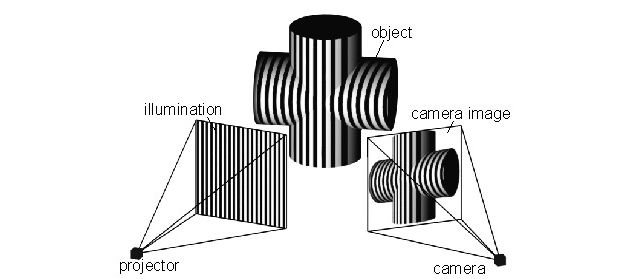
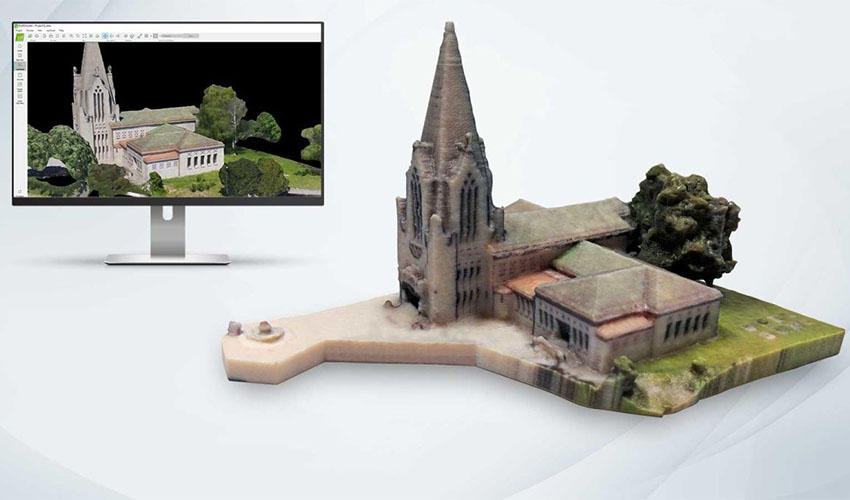
In addition to these two types, of which we have already discussed extensively, we are going to compare them with 3D laser and computerized tomography scanning methods to give you a wider range of alternatives.
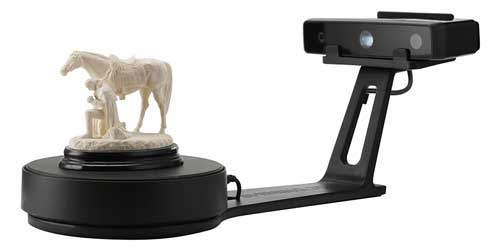
First we will talk a little about each of these technologies so that you understand how they work and then we will compare the advantages and disadvantages of each one so that you can choose the one that suits you best.
Photogrammetry
Photogrammetry, as we have discussed, is a technique that is revolutionizing the world. In a simplified way, through photogrammetry we take many pictures of an object from different perspectives. Later, specialized software analyzes all these photos, looking for characteristic points of the objects and identifying where these points are in each image. Through this analysis a point cloud is generated, which can later be converted into a mesh with our scanned object

The revolution in this method of 3D scanning is that you only need photographs of an object to be able to convert it into a 3D model. This opens many doors compared to other systems that require a 3D scanner itself, as we can scan very large objects such as statues, buildings or even geographical features such as mountains or rivers by using camera drones. This is known as aerial photogrammetry and is increasingly used in the industry.
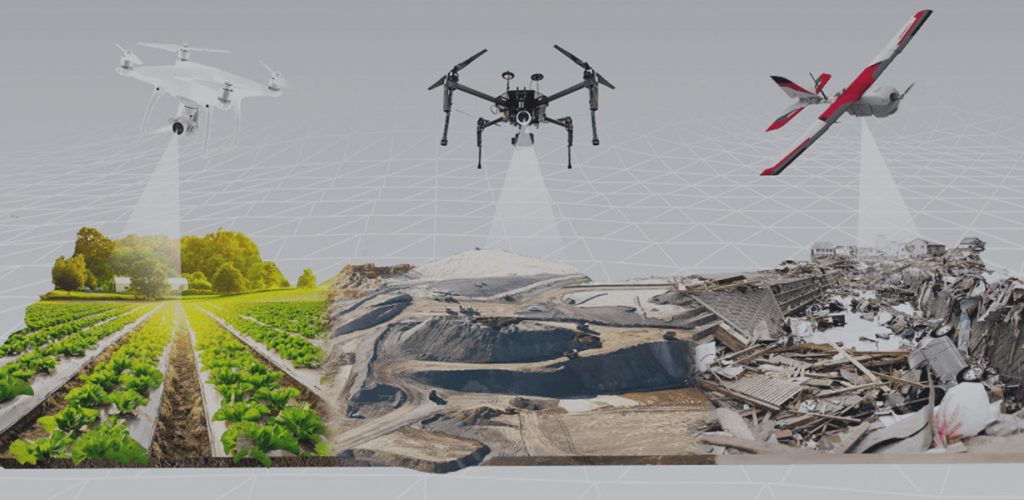
3D scanning using structured light
In 3D scanning using structured light, as the name suggests, we project structured patterns of light onto the object, such as parallel grids or common geometric patterns. These patterns will be deformed when projected onto the figure we are scanning due to its geometry. By analyzing these deformations using one or more photographs we can reconstruct the object that originated them, thus generating a 3D model that is a copy of the original.
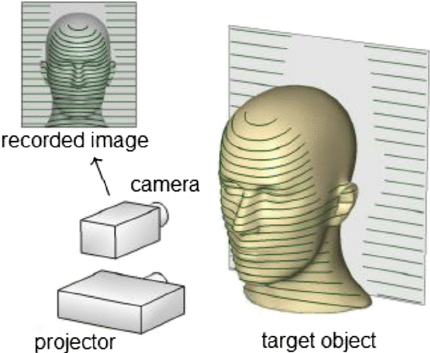
This technology, by using a projector to cast these patterns on the object, as you can imagine has its limitations: the need for dim lighting or total darkness, the impossibility of scanning very large objects… Later on we will talk about its advantages and disadvantages in greater depth.
3D Laser Scanning
There are two main technologies in 3D scanning using lasers: those that measure time of flight and those based on triangulation.
Many 3D scanners are based on time-of-flight technology, whereby a laser (or several) is beamed at the object and a receiver in the scanner itself measures how long it takes for the light to bounce and return. Knowing the speed of the laser and with some simple calculations we can use this technique to know the distance at which a point of the object is located. We only have to repeat this a few times to obtain a three-dimensional map of the distance that separates the scanner from each point of the object and, consequently, a 3D scan of the object itself.

Another similar way of scanning a 3D object using a laser is called triangulation. In this case we use a laser and a receiver to measure the distance using trigonometry.
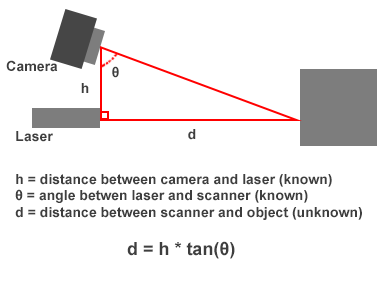
In both cases the operation is similar, as both rely on a laser and measure the distance through the bounce of the laser picked up by a special sensor. This is why both share most of the advantages and disadvantages.
Computerized Tomography (CT)
This method consists in taking a series of 2D photographs of different sections of the object using X-rays. All these 2D photographs are then superimposed as if they were layers to form a 3D model. Widely used in medicine, it is known as a CT or a CAT scan.
This system allows scanning not only the external part of the object, but also its internal geometry.
The computerized tomography is a technique that is generally used to obtain images of the interior of the human body and it is a diagnostic method widely used nowadays in most hospitals. The transition from a tomography image (known as DICOM because of the format in which it is saved) to a 3D model is called segmentation, and is a process used in medical 3D printing laboratories to obtain 3D models of the human body.
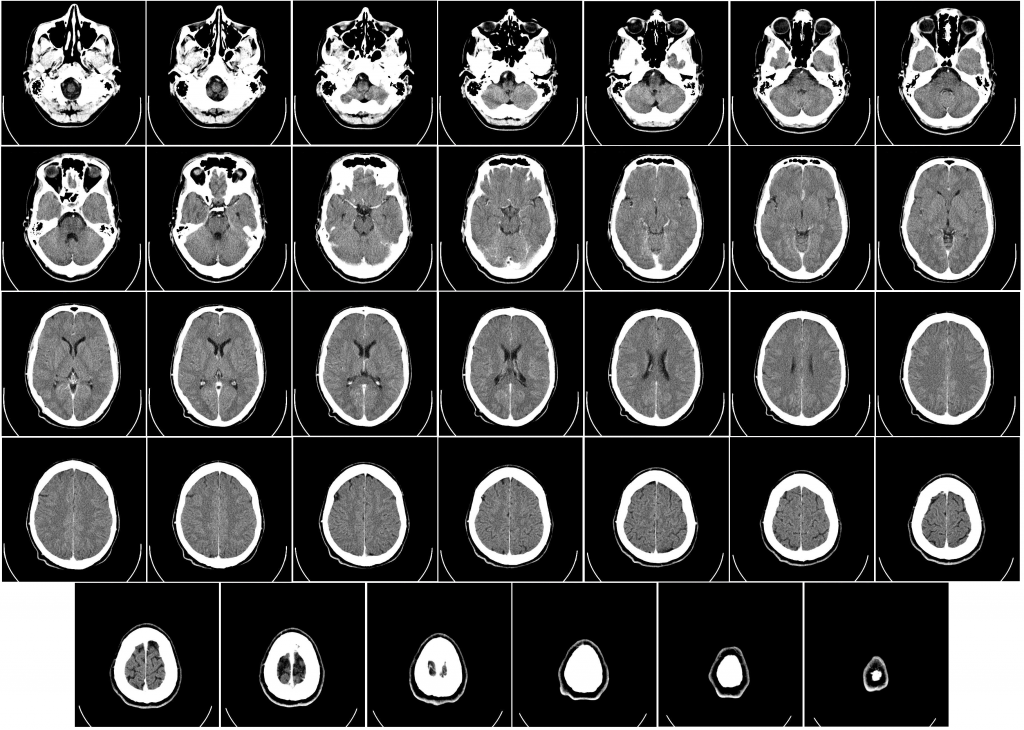
Advantages and disadvantages of each type of 3d scanning technology
Photogrammetry 3D Scanning

Pros
✅ It’s cheap because it doesn’t require specialized equipment
✅ Allows you to scan very large objects such as buildings
✅ It captures the texture of the object pretty accurately
✅ Allows to make ground analysis using drones
✅ It can be very precise
Cons
❌ It’s not very easy: Since we don’t use specialized scanners we don’t have the convenience of these, which are often plug-and-play
❌ Requires specialized software and computers with good processing power
Structured Light Scanning

Pros
Cons
✅ It is usually very easy to get good results using commercial scanners
✅ High-precision models
❌ Cannot be used outdoors or in brightly lit environments
❌ You can’t scan very large objects
❌ Scanners can be expensive
Laser Scanning

Pros
✅ It’s a highly versatile technology
✅ Allows not only to scan objects but also to measure distances, so it has many uses in robots and vehicles to scan the environment
✅ Allows you to make very low resolution scans at high speed, measuring only a few points on the object
Cons
❌ Does not work well in brightly lit environments
❌ In general, it is less accurate than scanning with structured light and also more error-prone
❌ Expensive equipment
Computerized Tomography

Pros
Cons
✅ Medical diagnostic application
✅ Very high resolution
✅ Can scan the internal features of the object
❌ This is by far the most expensive method
❌ The object must be fully inserted into the scanner, so we need very large scanners
❌ Requires being handled by a specialized X-ray technician
❌ Ionizing X-ray exposure
Conclusions
We’ve shown you four different methods of 3D scanning and told you some of their pros and cons so you can compare them. If you need to scan your own parts or add 3D scanning to your business model, please do not hesitate to contact us. In Bitfab we have experience in 3D scanning with various technologies and you can be sure that we will offer you the one that best fits your needs and those of your project.
